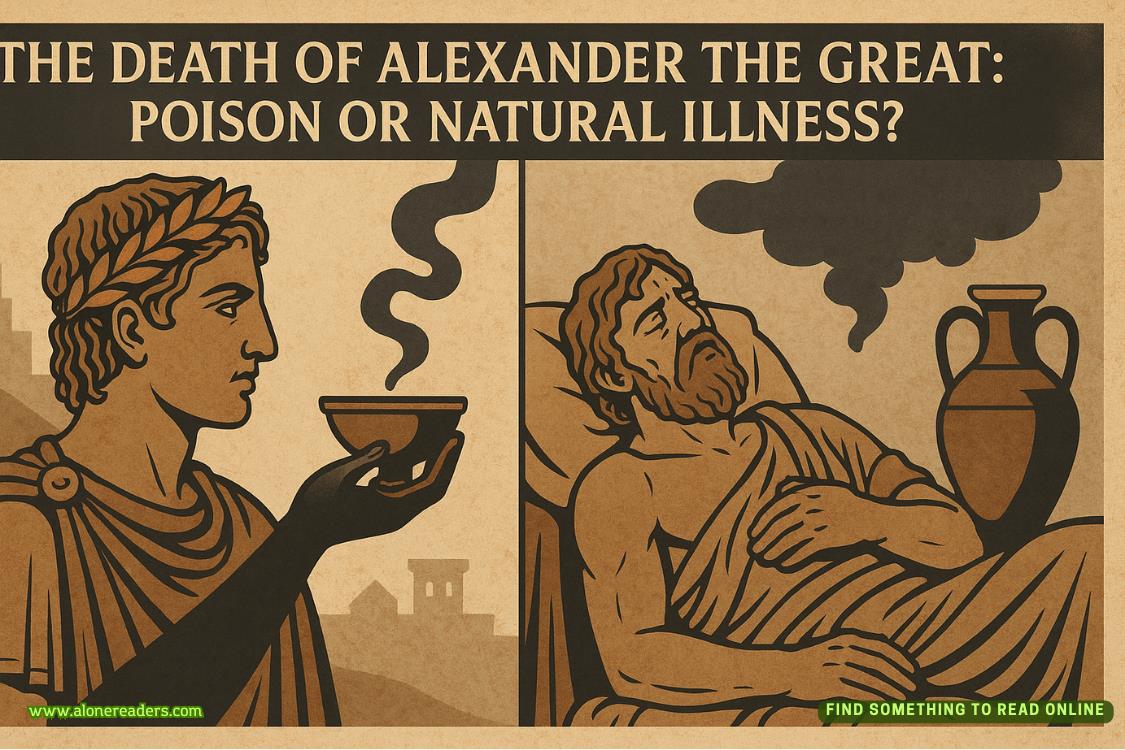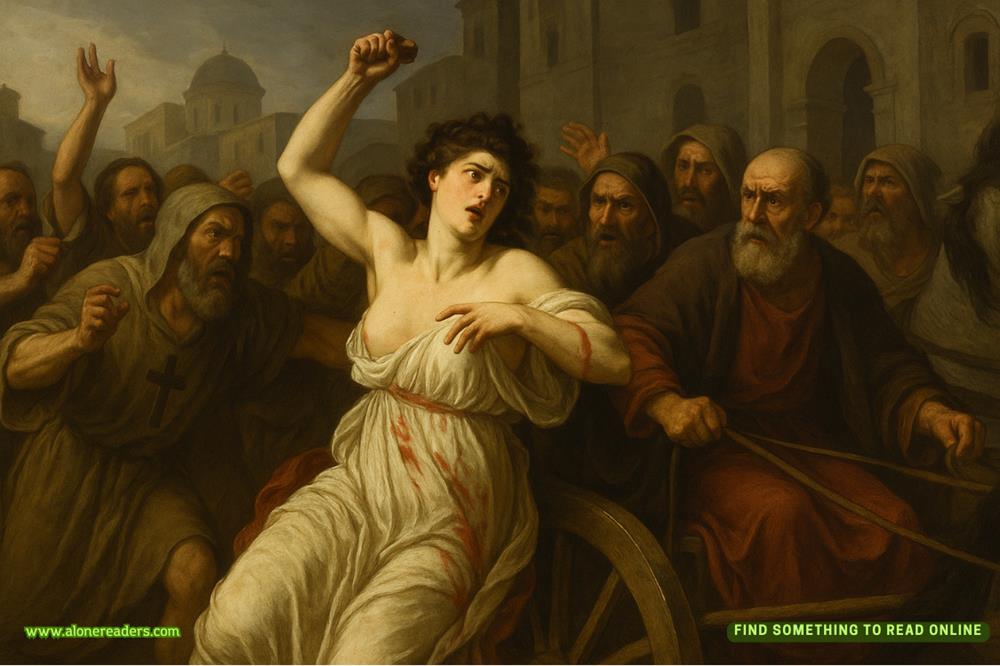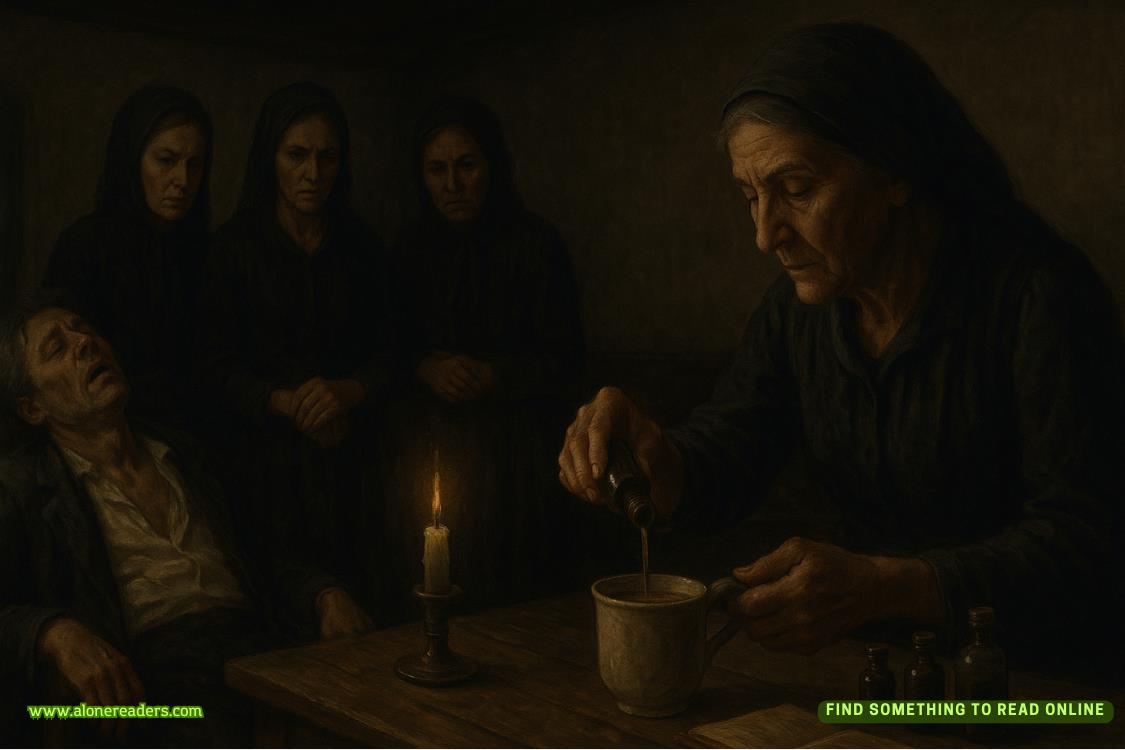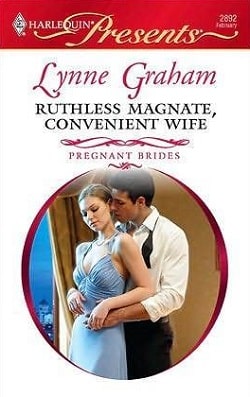Ezra
The light fell differentlyacross dead flesh.
I stepped back from my canvas, brush suspended between my fingers, and studied the composition. The studio was silent except for the soft classical music drifting from my speakers: Chopin's Nocturne in C-sharp minor, a fitting soundtrack for tonight's work. The air hung heavy with the sharp bite of turpentine, the metallic tang of blood, and the faint sweet-sour scent that only came from cooling flesh. My subject wouldn't complain about the hour or the temperature, positioned exactly as I had arranged him hours ago.
Some artists worked with clay, others with oils or watercolors. I worked with the interplay of shadow and light across cooling skin, capturing that fleeting moment when life transitioned to art. There was a specific pallor that occurred precisely four hours after death, before rigor fully set in, but after the blood hadsettled, when the human canvas achieved a marble-like quality impossible to replicate with living models. My fingers knew this texture intimately: the slightly resistant give of flesh that had not yet stiffened completely, the slackness of muscles that would never contract again.
I dipped my brush again into the special mixture I'd prepared earlier. The shade of blue-gray that bloomed on the canvas existed nowhere in commercial pigments; it couldn't. Its unique luminosity came from the bone ash I'd carefully ground and incorporated into the oil medium, harvested from the very subject who now inspired the painting. The cheekbone that had given this man his distinctive profile in life now gave my art its singular depth. The color captured an echo of the masterpiece sprawled on the plastic-covered table. My nostrils flared at the earthy, organic scent of the mixture, so different from the sterile smell of store-bought paint.
He had been beautiful, this one. Not in life. In life, he'd been ordinary, forgettable. But in death, I'd given him purpose. Elevated him. Transformed him from mundane to transcendent. His features, once animated by the banality of everyday expressions, now captured in perfect stillness, revealed an architecture of bone and flesh that spoke of mortality's exquisite design. The coldness of his skin beneath my fingertips while positioning him had been like marble warmed by desire. Flawless, unresisting, mine.
In these moments, I understood the divine impulse. To create, to destroy, to transform according to one's vision. This was godhood in its purest form. The religious might speak of their deity breathing life into clay, but I found greater truth in breathing art into death. My subjects were imperfect vessels, like all humanity, but through my work, they achieved a perfection denied them in life. My canvas became my universe, my brushes the instruments of transfiguration. The powerwas intoxicating, but ultimately hollow without someone to witness, to understand, to worship alongside me at this altar of transformation.
Perhaps that would change with Micah Salt.
"You're my best work yet," I murmured, though I said that to all of them in the moment. Artists are notoriously fickle with their affections. My words hung in the air, absorbed by the sound-dampening panels that lined the walls.
And yet, even as I stood over my latest creation, my thoughts drifted to Micah Salt. What masterpiece might we create together?
The exhibition opened in three weeks. Five pieces completed, one final masterpiece to go. Each painting in the series explored a different aspect of chiaroscuro: the play of light and dark, the revelation of form through shadow. The gallery owner thought I worked from photographs. A necessary deception; the art world wasn't ready for my methods.
I ran my thumb across the rough ridges of dried paint and checked my watch. Almost four in the morning. I'd been working for nearly eight hours, lost in the meditative state that came with true creation. My back ached pleasantly from standing so long, muscles fatigued in the way that only came from sustained focus. Soon I would need to clean up. The basement studio of my isolated country home was designed for privacy and practicality. The drains in the concrete floors still carried the faint coppery scent of previous projects, and soundproofing panels ensured my work remained undisturbed. But even the most careful artist must attend to details.
My phone screen lit up suddenly, casting a harsh blue glow across my workspace. I glanced at the time: 4:15 AM. The battery indicator had turned red. I'd forgotten to plug it in again.
I set down my brush with a sigh, the wooden handle tapping gently against the glass palette. In less than six hours, Iwould need to transform completely into Professor Ezra Bishop, respected faculty member at Ravencrest College of Fine Arts. Today marked my first private session with Micah Salt at 10 AM. I rarely took on dedicated protégés. Most students lacked the spark that made the investment of my time worthwhile. But occasionally, one emerged from the mediocrity.
Micah Salt was one such individual.
I wiped my hands on a rag, the dried paint cracked and flaked from my skin. Then I scrolled through the file I'd prepared on Micah Salt. I'd selected him personally from the graduate program, having spotted something extraordinary in his portfolio that the other faculty had overlooked. While technically accomplished, it wasn't his skill that had caught my attention. It was the latent darkness in his work. A certain quality in his brushstrokes that suggested a deeper understanding of shadow than even he might realize. His paintings were beautiful, but beneath that beauty lurked something exquisite and disturbing, waiting to be cultivated.
My fingers reached for the printout of his thesis work, that extraordinary triptych that had nearly gotten him expelled. The paper was slightly rough against my skin, a cheap department store copy that failed to capture the true power of the original. I traced the jagged edge where he'd slashed through the canvas. Even in reproduction, the violence lingered. My finger lingered on the ragged edges where Micah had violently scraped away the paint. Even in this pale reproduction, I could sense the raw energy of that destruction. The paper warmed beneath my touch, as if the violence of the act still generated heat months later.
The dean had been surprised by my request to mentor him personally. In my fifteen years at Ravencrest, I'd only chosen three other students for such an honor. The exclusivity madethe position much more coveted, and Micah had accepted immediately.
I studied the photograph attached to his file again. Dark eyes, hesitant smile. A contradiction of confidence and vulnerability. But it was his gaze that first caught my attention during his gallery showing last semester. There was something feral hiding behind that smile, something most people would miss or deliberately ignore. A darkness he himself might not yet recognize, but one that was evident in every canvas he created.
His specialty in dark baroque interpretations with religious iconography wasn't particularly revolutionary in itself. The art world had seen countless reinterpretations of Caravaggio and his contemporaries. But it was his thesis submission that had truly separated him from his peers: a triptych where he had systematically destroyed his own immaculate work. He had slashed through the canvas, scraped away paint to reveal raw canvas beneath, diluted sections until they bled and distorted. Most provocatively, he had completely obliterated the face of Christ in the central panel, leaving a violent void where divinity should have been.
The faculty had been scandalized. Half wanted him expelled for desecration, and the other half praised his technical skill while questioning his stability. Only I had recognized the brilliance of it: the courage to create beauty specifically to destroy it, to suggest that true divinity might be found in the deliberate ruination of the sacred. It was an act of creative violence that resonated with my own artistic philosophy.
Most people moved through life with their eyes closed, seeing only what they expected to see. I had long ago learned to perceive what others couldn't or wouldn't acknowledge. And in Micah Salt's eyes, I saw potential that had nothing to do with technical skill.
Innocence without insipidness. A canvas waiting for the right artist. A mind waiting for someone who could truly see him.
"Micah," I said his name aloud, testing the sound of it. "Mi-cah Salt." The syllables rolled across my tongue, like caramel-coated dark chocolate.
I turned back to my canvas, adding a few final strokes before the light shifted with the approaching dawn. Through the high, narrow windows near the ceiling, the night sky was beginning to lose its inky depth, fading to a deep indigo at the edges. The painting was nearly complete: a study of a man caught in the moment between knowing and not knowing. His face was peaceful yet alert, as if listening for approaching footsteps. I'd captured that instant when my subject realized what I was, what was about to happen, but before fear could distort his features.
That moment of clarity was what I hunted, more than the kill itself. The second when the plastic curtain of social pretense dropped away and pure animal awareness took its place. Raw humanity, stripped of artifice. The memory of his eyes widening in recognition sent a pleasant tingle across my skin even now.
I cleaned my brushes methodically, wiping each one with a solvent-soaked rag before washing them in the deep utility sink. My special pigments required careful handling. Some contained elements that would raise questions if discovered. The solvent stung my nostrils, cutting through the lingering organic scents of my work. In the locked cabinet beside my workstation, jars of custom materials awaited future use: powders and pastes derived from my subjects, labeled with dates and anatomical sources. The crimson made from heart tissue. The ochre extracted from the liver. The pearlescent white rendered from carefully processed bone.
The ritual of cleaning soothed me, brought me back to the practical world I needed to inhabit in a few hours. Professor Bishop had papers to grade, meetings to attend, andimpressionable minds to shape. The mundane responsibilities I tolerated for the sake of finding worthy subjects and maintaining my cover within society's banal rhythms.
As for the cooling masterpiece on my table, he would need to be retired to the specially prepared room beneath the studio floor. Preserved for reference, at least until the exhibition was complete. I'd developed techniques over the years, chemicals, specialized refrigeration, that slowed decomposition long enough to complete a series. The subtle hum of the refrigeration system below provided a constant white noise that I found oddly comforting.
I hummed along with Chopin as I worked, wrapping and preparing with the methodical patience of a spider on its web. The plastic sheeting crinkled as I encased my subject in a translucent cocoon. The zip ties cinched with a satisfying click that signaled completion, binding my prey in its final repose. Like an arachnid with its quarry, I took my time, ensuring every fold was secure, every binding tight. There was artistry even in this stage of preservation, a ritual preparation that had become almost meditative over the years.















